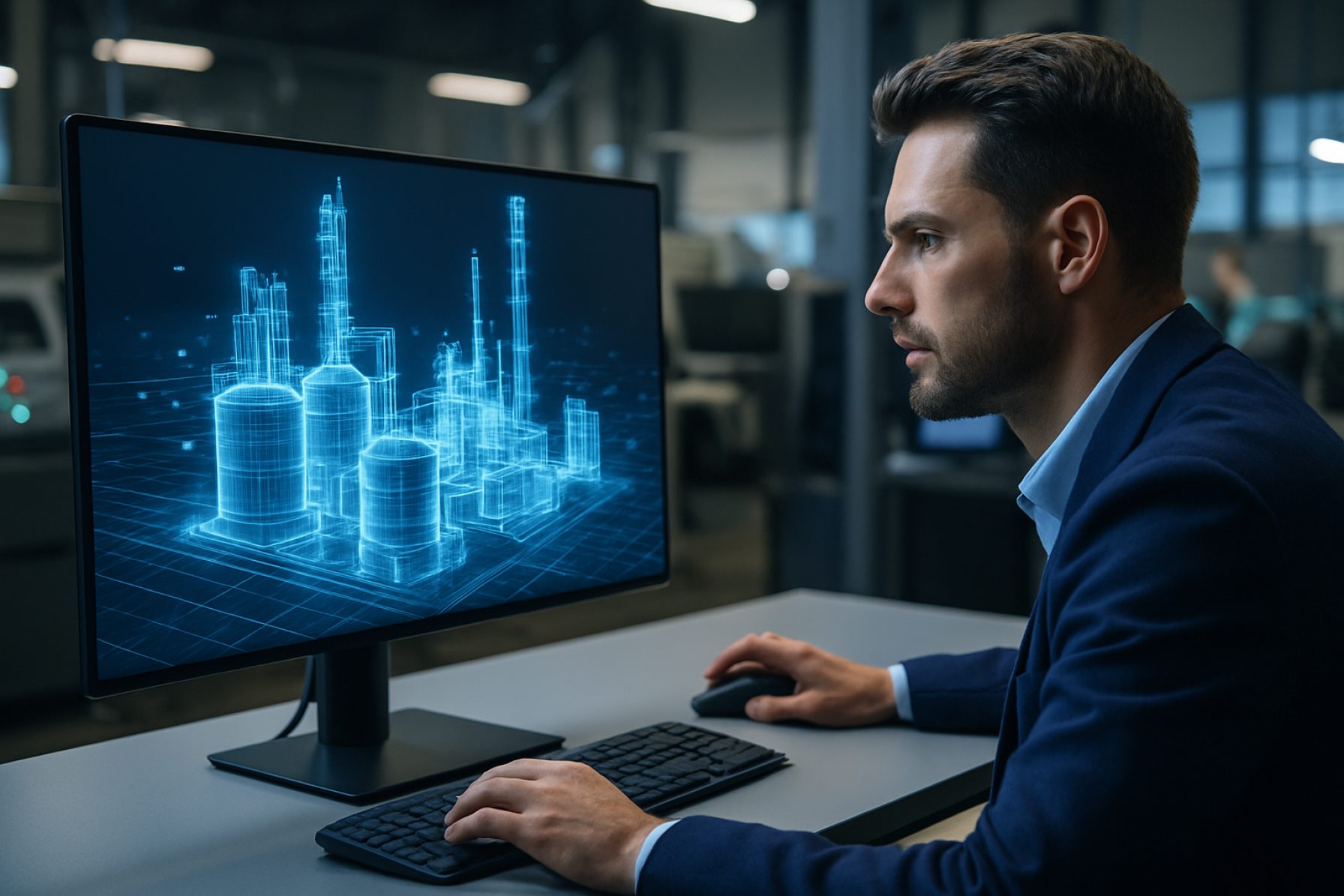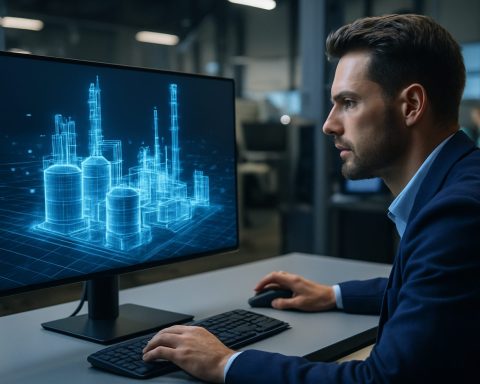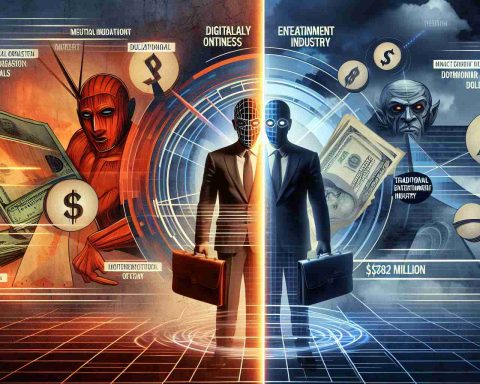Digital Twin Modeling: Transforming Physical Systems into Intelligent Virtual Replicas. Discover How This Cutting-Edge Technology Drives Predictive Power, Efficiency, and Innovation Across Sectors.
- Introduction to Digital Twin Modeling
- Core Technologies Behind Digital Twins
- Key Benefits and Business Value
- Applications Across Industries
- Integration with IoT, AI, and Big Data
- Challenges and Considerations in Implementation
- Case Studies: Success Stories in Digital Twin Adoption
- Future Trends and Innovations in Digital Twin Modeling
- Best Practices for Deploying Digital Twins
- Sources & References
Introduction to Digital Twin Modeling
Digital Twin Modeling refers to the creation of virtual representations of physical assets, systems, or processes, enabling real-time monitoring, simulation, and optimization throughout their lifecycle. This approach integrates data from sensors, historical records, and operational systems to mirror the state and behavior of the physical counterpart. The concept has gained significant traction across industries such as manufacturing, healthcare, energy, and urban planning, driven by advances in the Internet of Things (IoT), artificial intelligence, and cloud computing.
A digital twin not only visualizes the current state of an asset but also predicts future performance and potential failures through advanced analytics and machine learning. This predictive capability supports proactive maintenance, reduces downtime, and enhances decision-making. For example, in manufacturing, digital twins are used to optimize production lines, improve product quality, and reduce operational costs by simulating different scenarios before implementing changes in the real world. In healthcare, digital twins of organs or entire patients can assist in personalized treatment planning and risk assessment.
The adoption of digital twin modeling is further supported by international standards and frameworks, such as those developed by the International Organization for Standardization (ISO) and the Digital Twin Consortium, which provide guidelines for interoperability, data management, and security. As digital twin technology continues to evolve, it is expected to play a pivotal role in driving digital transformation, enabling organizations to achieve greater efficiency, sustainability, and resilience in increasingly complex environments.
Core Technologies Behind Digital Twins
Digital twin modeling relies on a convergence of advanced technologies that enable the creation, synchronization, and utilization of virtual replicas of physical assets or systems. At its core, digital twin modeling integrates high-fidelity simulation, real-time data acquisition, and advanced analytics. The process begins with the development of a detailed virtual model, often constructed using computer-aided design (CAD) and building information modeling (BIM) tools. These models are then enriched with data from Internet of Things (IoT) sensors, which continuously stream operational and environmental data from the physical counterpart to the digital environment. This real-time data integration is crucial for maintaining the accuracy and relevance of the digital twin, allowing it to reflect the current state of the asset or process.
Machine learning and artificial intelligence (AI) further enhance digital twin modeling by enabling predictive analytics, anomaly detection, and optimization. These technologies process vast amounts of sensor data to identify patterns, forecast future states, and recommend actions, thus supporting proactive decision-making. Cloud computing platforms provide the necessary scalability and computational power to manage and analyze the large datasets generated by digital twins, while also facilitating collaboration across geographically dispersed teams. Additionally, interoperability standards and APIs ensure seamless data exchange between different systems and platforms, which is essential for integrating digital twins into broader enterprise architectures.
The synergy of these core technologies—IoT, AI/ML, cloud computing, and interoperability frameworks—forms the backbone of digital twin modeling, enabling organizations to achieve enhanced operational efficiency, reduced downtime, and improved asset lifecycle management. For further reading, see National Institute of Standards and Technology and Gartner.
Key Benefits and Business Value
Digital twin modeling delivers significant benefits and business value across industries by enabling organizations to create dynamic, data-driven representations of physical assets, processes, or systems. One of the primary advantages is enhanced operational efficiency. By simulating real-world scenarios and monitoring assets in real time, companies can optimize performance, reduce downtime, and predict maintenance needs, leading to substantial cost savings. For example, manufacturers use digital twins to anticipate equipment failures and schedule proactive maintenance, minimizing unplanned outages and extending asset lifecycles (GE Digital).
Another key benefit is improved decision-making. Digital twins aggregate data from multiple sources, providing a holistic view of operations and enabling data-driven insights. This empowers stakeholders to test strategies virtually before implementation, reducing risk and accelerating innovation. In sectors like construction and urban planning, digital twins facilitate scenario analysis, resource optimization, and stakeholder collaboration, resulting in more resilient and sustainable projects (Siemens).
Furthermore, digital twin modeling supports product and service innovation. By analyzing usage patterns and performance data, organizations can refine product designs, personalize customer experiences, and develop new business models such as predictive maintenance or outcome-based services. This continuous feedback loop fosters agility and competitive advantage in rapidly evolving markets (IBM).
Overall, the adoption of digital twin modeling translates into tangible business value by driving efficiency, reducing costs, enhancing innovation, and supporting strategic decision-making across diverse sectors.
Applications Across Industries
Digital twin modeling has rapidly evolved from a conceptual framework to a practical tool with transformative applications across diverse industries. In manufacturing, digital twins enable real-time monitoring and predictive maintenance of machinery, reducing downtime and optimizing production processes. For example, companies like Siemens leverage digital twins to simulate factory operations, allowing for scenario testing and process optimization before physical changes are implemented. In the energy sector, digital twins of power plants and grids facilitate performance analysis, fault detection, and energy efficiency improvements, as demonstrated by initiatives from General Electric.
The healthcare industry utilizes digital twin modeling to create patient-specific models for personalized treatment planning and surgical rehearsal. Organizations such as Philips are developing digital twins of organs and physiological systems to enhance diagnostics and therapy outcomes. In urban planning and smart cities, digital twins of infrastructure and transportation networks support data-driven decision-making, resource allocation, and emergency response, with cities like Singapore adopting these technologies through collaborations with Dassault Systèmes.
Additionally, the aerospace and automotive sectors employ digital twins for lifecycle management of complex assets, from design and testing to maintenance and decommissioning. NASA uses digital twins to monitor spacecraft health and predict system failures, while automotive leaders such as BMW Group apply the technology to optimize vehicle performance and manufacturing logistics. These cross-industry applications underscore the versatility and value of digital twin modeling in driving innovation, efficiency, and resilience.
Integration with IoT, AI, and Big Data
The integration of Digital Twin modeling with IoT, AI, and Big Data technologies is revolutionizing the way organizations monitor, analyze, and optimize complex systems. IoT devices serve as the primary data acquisition layer, continuously streaming real-time sensor data from physical assets into the digital twin environment. This seamless data flow enables the digital twin to reflect the current state of its physical counterpart with high fidelity, supporting applications such as predictive maintenance and remote monitoring (IBM).
Artificial Intelligence (AI) enhances digital twin models by enabling advanced analytics, pattern recognition, and decision-making capabilities. Machine learning algorithms can process the vast datasets generated by IoT devices, uncovering hidden trends and providing actionable insights. For example, AI-driven digital twins can predict equipment failures, optimize energy consumption, and recommend process improvements, thereby increasing operational efficiency and reducing costs (Microsoft).
Big Data platforms play a crucial role in managing and processing the enormous volumes of heterogeneous data generated by IoT-enabled assets. These platforms provide the scalability and computational power required to store, analyze, and visualize data in real time. By leveraging Big Data analytics, digital twins can support complex simulations, scenario planning, and long-term trend analysis, further enhancing their value in strategic decision-making (GE Digital).
The convergence of IoT, AI, and Big Data within digital twin modeling not only improves the accuracy and utility of digital representations but also unlocks new opportunities for innovation across industries such as manufacturing, healthcare, and smart cities.
Challenges and Considerations in Implementation
Implementing digital twin modeling presents a range of challenges and considerations that organizations must address to realize its full potential. One of the primary challenges is data integration. Digital twins rely on real-time and historical data from diverse sources, such as IoT sensors, enterprise systems, and external databases. Ensuring seamless interoperability and data consistency across these heterogeneous systems is complex and often requires robust middleware solutions and standardized data protocols (International Organization for Standardization).
Another significant consideration is the computational demand. High-fidelity digital twins, especially those simulating complex physical processes, require substantial processing power and storage capacity. This can lead to increased infrastructure costs and necessitate the adoption of scalable cloud or edge computing solutions (National Institute of Standards and Technology).
Data security and privacy are also critical concerns. Digital twins often handle sensitive operational and personal data, making them attractive targets for cyberattacks. Implementing robust cybersecurity measures, such as encryption, access controls, and continuous monitoring, is essential to mitigate these risks (European Union Agency for Cybersecurity).
Additionally, organizations must consider the lifecycle management of digital twins. As physical assets evolve, their digital counterparts must be updated to maintain accuracy and relevance. This requires ongoing investment in model maintenance and validation. Finally, the lack of industry-wide standards and best practices can hinder interoperability and scalability, underscoring the need for collaborative efforts in standardization and knowledge sharing (Digital Twin Consortium).
Case Studies: Success Stories in Digital Twin Adoption
The adoption of digital twin modeling has yielded transformative results across various industries, as evidenced by several high-profile case studies. In the aerospace sector, GE Aviation implemented digital twins to monitor and predict the performance of jet engines. By leveraging real-time sensor data and advanced analytics, GE reduced unplanned downtime and optimized maintenance schedules, resulting in significant cost savings and improved safety.
In manufacturing, Siemens utilized digital twin technology to create virtual replicas of production lines. This enabled the company to simulate process changes, identify bottlenecks, and test new configurations before physical implementation. The result was a marked increase in operational efficiency and a reduction in time-to-market for new products.
The energy sector has also benefited from digital twin modeling. Shell developed digital twins of its offshore oil platforms, allowing for remote monitoring, predictive maintenance, and enhanced safety protocols. This approach minimized the need for on-site inspections and reduced operational risks.
These success stories underscore the versatility and value of digital twin modeling. By providing a dynamic, data-driven representation of physical assets, organizations can make more informed decisions, optimize performance, and drive innovation. The continued evolution of digital twin technology promises even broader applications and deeper integration across sectors.
Future Trends and Innovations in Digital Twin Modeling
The future of digital twin modeling is poised for significant transformation, driven by advances in artificial intelligence (AI), edge computing, and interoperability standards. One emerging trend is the integration of AI and machine learning algorithms to enable predictive analytics and autonomous decision-making within digital twins. This allows for real-time optimization and adaptation of complex systems, such as smart cities and industrial processes, based on continuous data streams and evolving conditions. For example, AI-powered digital twins can anticipate equipment failures and recommend proactive maintenance, reducing downtime and operational costs (Gartner).
Another innovation is the deployment of digital twins at the edge, where data is processed locally rather than in centralized cloud environments. Edge-based digital twins enable faster response times and improved privacy, which is particularly valuable in sectors like healthcare and autonomous vehicles (IBM). Additionally, the adoption of open interoperability standards, such as those promoted by the Digital Twin Consortium, is facilitating seamless data exchange and integration across diverse platforms and industries.
Looking ahead, the convergence of digital twins with technologies like the Internet of Things (IoT), blockchain, and extended reality (XR) is expected to unlock new possibilities for immersive simulation, secure data sharing, and collaborative design. As digital twin ecosystems mature, they will play a pivotal role in driving innovation, sustainability, and resilience across sectors ranging from manufacturing to urban planning (Deloitte).
Best Practices for Deploying Digital Twins
Deploying digital twins effectively requires adherence to several best practices that ensure scalability, accuracy, and long-term value. First, organizations should prioritize interoperability by adopting open standards and modular architectures. This approach facilitates seamless integration with existing IT and operational technology systems, reducing vendor lock-in and enabling future upgrades. For example, leveraging frameworks such as those promoted by the Digital Twin Consortium can help standardize data exchange and model representation.
Another best practice is to establish a robust data governance strategy. Digital twins rely on high-quality, real-time data from diverse sources, including IoT sensors, enterprise systems, and external databases. Ensuring data accuracy, consistency, and security is critical. Organizations should implement clear data ownership policies, access controls, and validation mechanisms, as recommended by the International Organization for Standardization (ISO).
Iterative development and validation are also essential. Rather than attempting to build a comprehensive digital twin from the outset, teams should start with a minimum viable model and incrementally enhance its fidelity and scope. Continuous feedback from domain experts and end-users helps refine the model and align it with operational realities, as highlighted by Gartner.
Finally, organizations should plan for lifecycle management, including regular updates to reflect changes in the physical asset or process. This ensures the digital twin remains a reliable decision-support tool over time. By following these best practices, enterprises can maximize the return on investment and strategic impact of their digital twin initiatives.
Sources & References
- International Organization for Standardization (ISO)
- National Institute of Standards and Technology
- GE Digital
- Siemens
- IBM
- Philips
- NASA
- Microsoft
- European Union Agency for Cybersecurity
- Shell
- Deloitte










